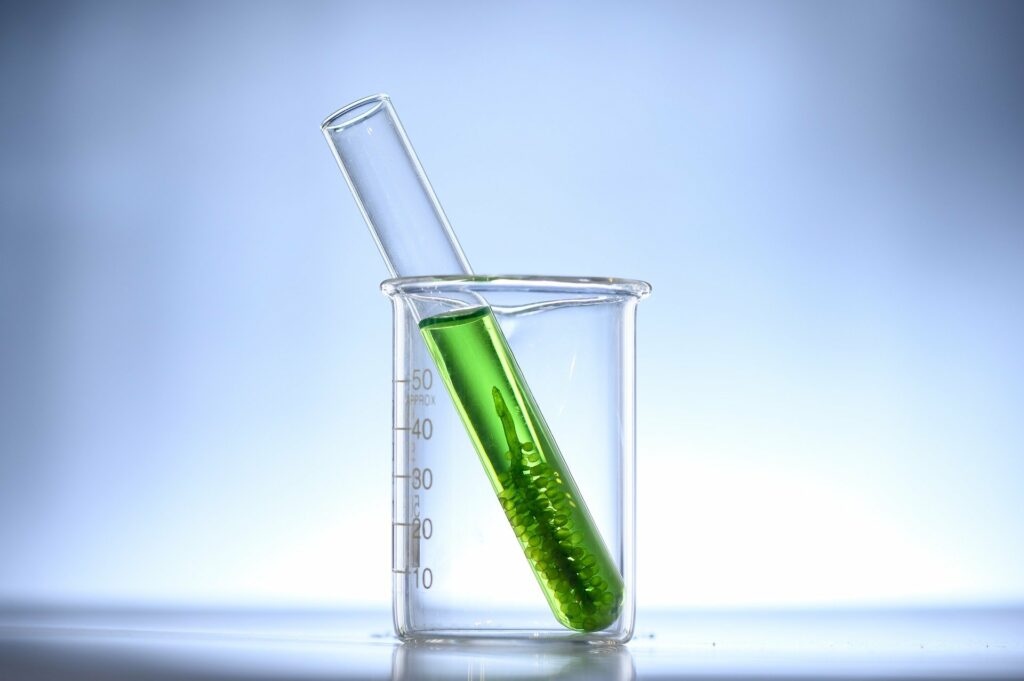A new, ultra-efficient catalyst could pave the way towards turning various products from food waste to old tires into biofuels or medicine.

The new material allows for efficient, low-cost recycling of low-grade organic material into valuable chemical products. Food scraps, used cooking oil, agricultural waste, or even plastic can be used in the process (even when relatively impure) can be used as part of the process.
Leftover fuel
“The quality of modern life is critically dependent on complex molecules to maintain our health and provide nutritious food, clean water, and cheap energy,” says co-lead author Professor Adam Lee from RMIT University, Australia.”These molecules are currently produced through unsustainable chemical processes that pollute the atmosphere, soil, and waterways.”
“Our new catalysts can help us get the full value of resources that would ordinarily go to waste to advance the circular economy. And by radically boosting efficiency, they could help us reduce environmental pollution from chemical manufacturing and bring us closer to the green chemistry revolution.
Turning unwanted organic material into useful products isn’t out of our reach. Currently, however, the processes we use to do so are slow and inefficient, and the tools we have to improve on them, such as chemical catalysts or engineering solutions, are quite expensive. They also require that the raw materials used be very pure. For example, waste cooking oil needs to undergo a very energy-intensive purification process before being used for biodiesel production, as our current methods can only handle around 1-2% contaminants in their raw materials.
The new catalyst, however, can work with ingredients (‘feedstock’) comprising up to 50% contaminants. According to the authors, it’s so efficient it could also double the efficiency of our current processing methods.
The team first fabricated a porous ceramic sponge 100 times thinner than a human hair that contains several different (and specialized) active components. Feedstock molecules enter through the larger pores and undergo an initial chemical reaction, and later flow into smaller pores where final reactions take place. It’s the first catalyst that can mediate several chemical reactions in a sequence in a single particle, the authors note, which helps simplify the process and keeps costs low.
This approach, they explain, mimics the way enzymes handle complex chemical processes in living cells.
Catalysts have previously been developed that can perform multiple simultaneous reactions, but these approaches offer little control over the chemistry and tend to be inefficient and unpredictable,” said Professor Karen Wilson, also from RMIT.
“Our bio-inspired approach looks to nature’s catalysts — enzymes — to develop a powerful and precise way of performing multiple reactions in a set sequence. It’s like having a nanoscale production line for chemical reactions – all housed in one, tiny and super-efficient catalyst particle.”
Even better, these sponges are cheap to manufacture and don’t use any rare and expensive materials like precious metals. They’re also meant to be employed in a similarly simple manner: mix feedstock such as agricultural waste with the catalysts in a large container, heat gently, and stir.
Their ease of use and low cost should make them attractive in developing countries where diesel is widely employed. Farmers, in particular, are well suited to using these catalyst sponges, as they have access to large quantities of agricultural byproducts to turn into fuel for their farms and machinery.
“If we could empower farmers to produce biodiesel directly from agricultural waste like rice bran, cashew nut and castor seed shells, on their own land, this would help address the critical issues of energy poverty and carbon emissions,” Wilson said.
The team now plans to further refine their catalyst sponges to allow for production of a greater range of final products and useful feedstock, such as producing jet fuel from forestry waste or old rubber. Until then, however, they will be hard at work scaling up production, which is currently limited to the order of a few grams.
The paper “A spatially orthogonal hierarchically porous acid-base catalyst for cascade and antagonistic reactions” has been published in the journal Nature Catalysis.


